Abstract
1. Washed suspensions of two Achromobacter species (G2 and 2L), capable of growth upon 2- and 3-hydroxypyridine respectively as sources of C and N, rapidly oxidized their growth substrate pyridine-2,5-diol (2,5-dihydroxypyridine) and the putative ring-cleavage product maleamate without a lag. Suspensions derived from fumarate plus (NH4)2SO4 cultures were unable to do so. 2. Extracts of both bacteria oxidized pyridine-2,5-diol with the stoicheiometry of an oxygenase forming 1mol of NH3/mol of substrate. 3. Heat-treated extracts, however, formed maleamate and formate with little free NH3. 4. The conversion of maleamate into maleate plus NH3 by extracts of strain 2L, fractionated with (NH4)2SO4, and the metabolism of maleamate and maleate to fumarate by extracts of both strains demonstrated the existence of the enzymes catalysing each reaction of the maleamate pathway in these bacteria. 5. The pyridine-2,5-diol dioxygenase (mol.wt. approx. 340000) in extracts of these Achromobacter species required Fe2+ (1.7μm) to restore full activity after dialysis or treatment with chelating agents; the enzyme from strain 2L also had a specific requirement for l-cysteine (6.7mm), which could not be replaced by GSH or dithiothreitol. 6. The oxygenase was strongly inhibited in a competitive manner by the isomeric pyridine-2,3- and -3,4-diols.
Full text
PDF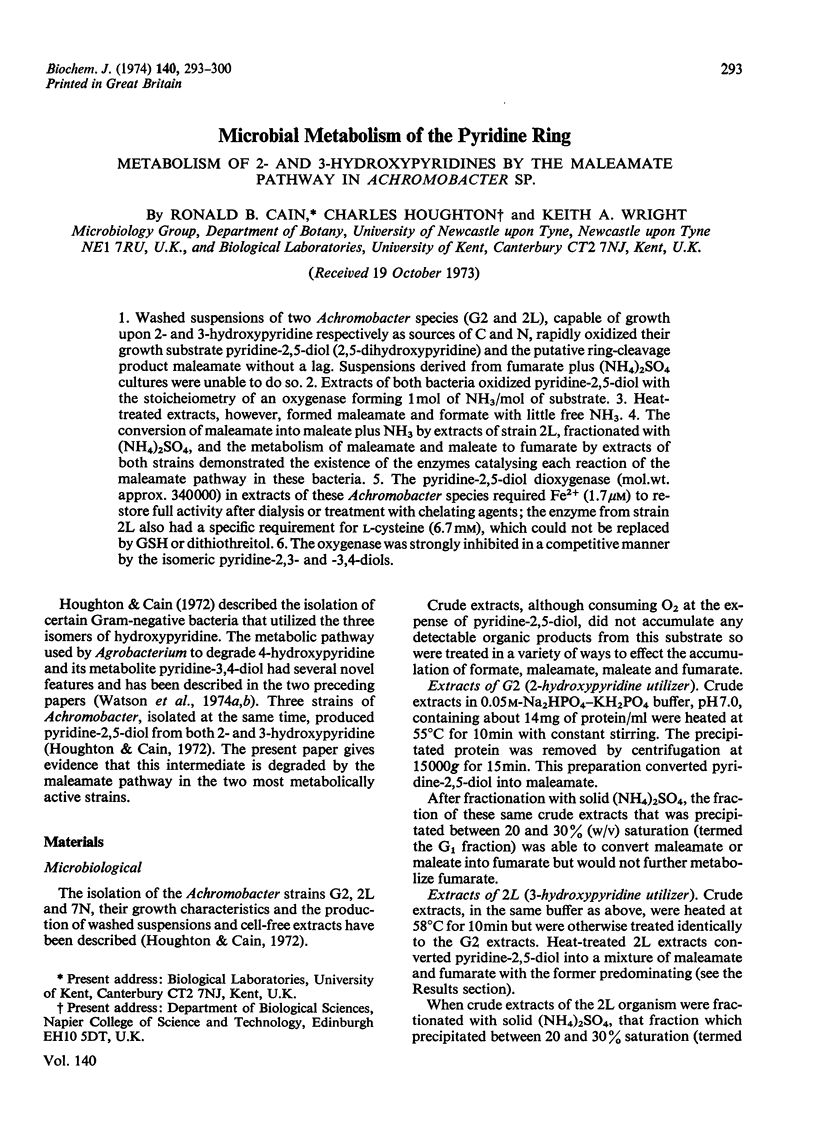
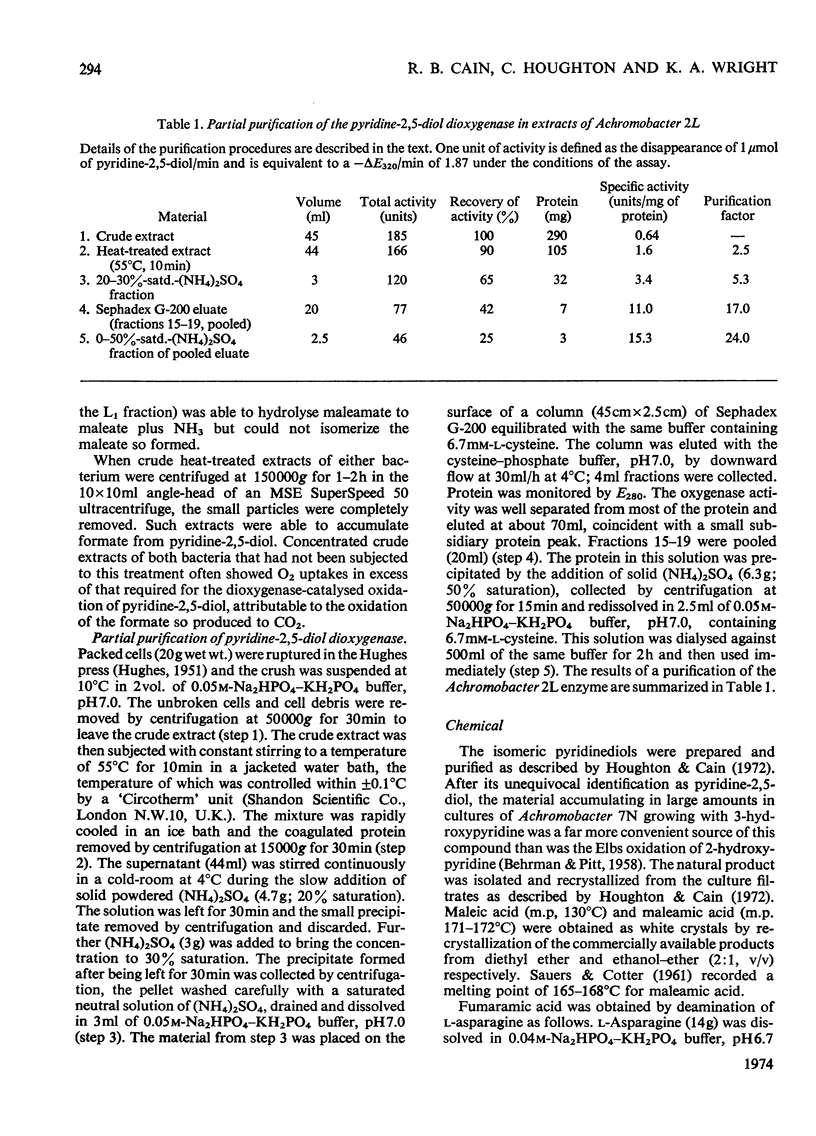
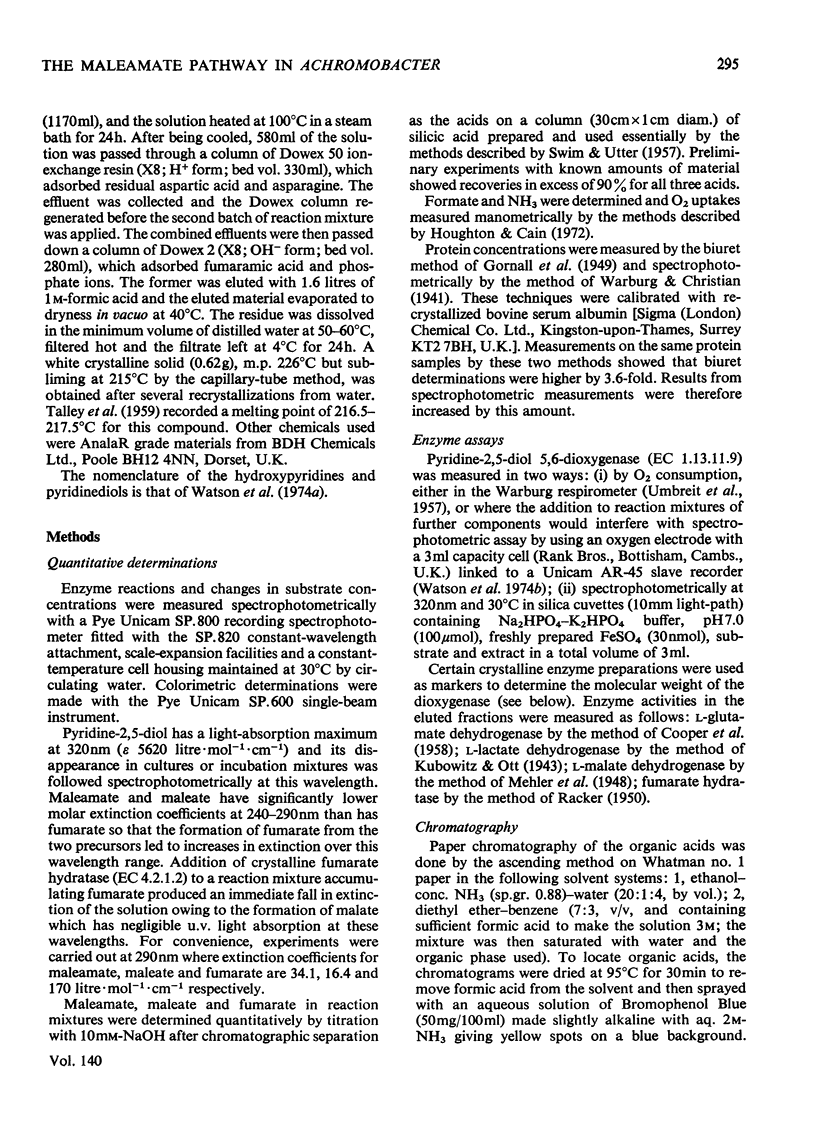
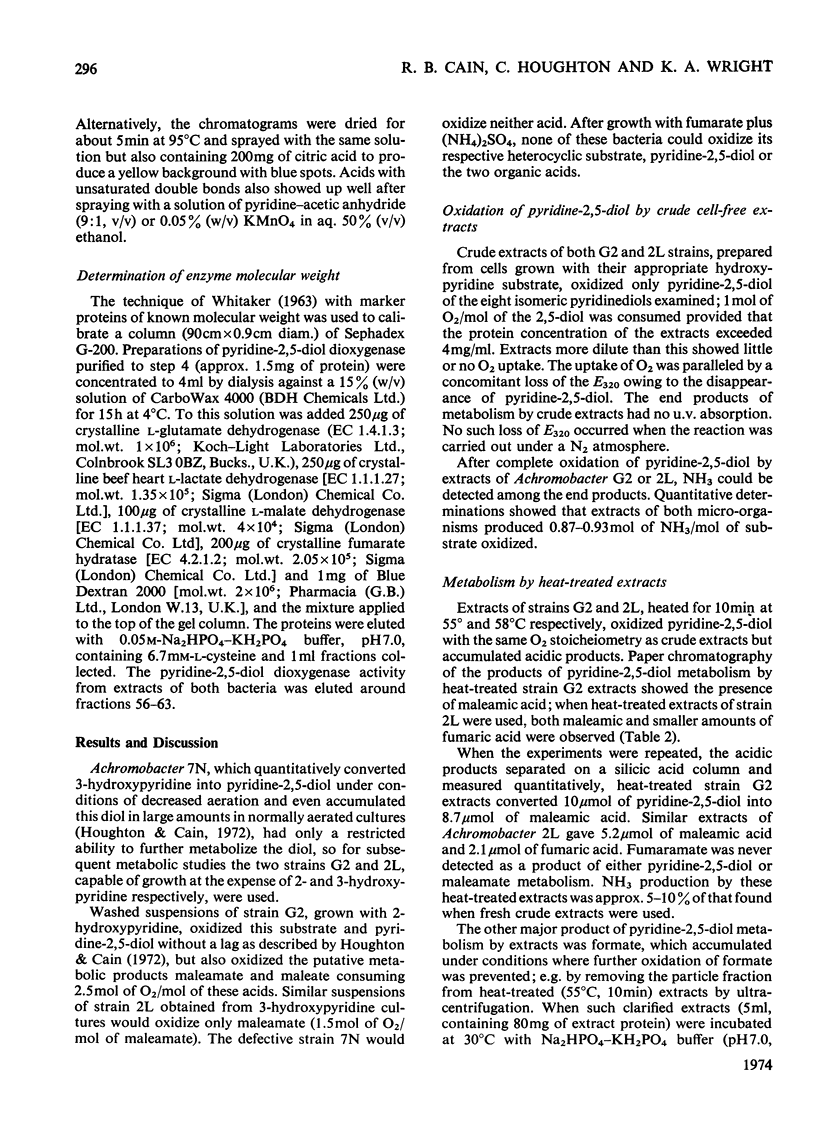
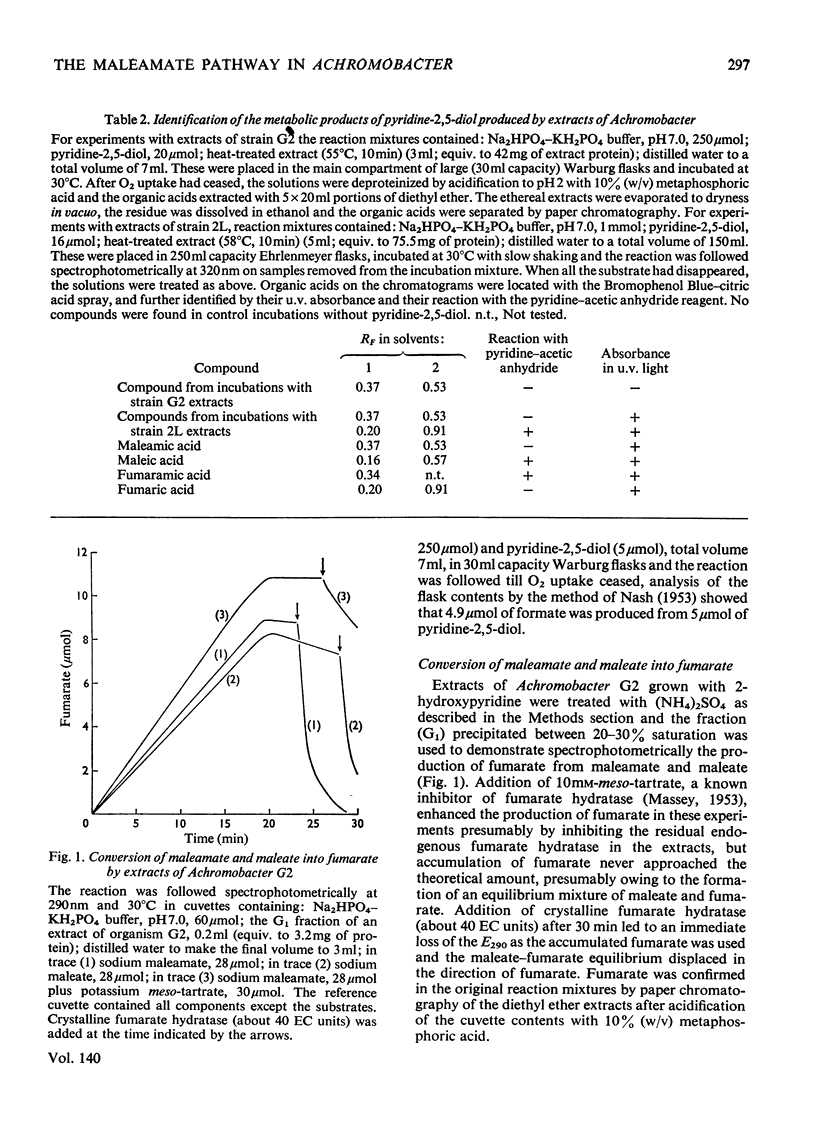
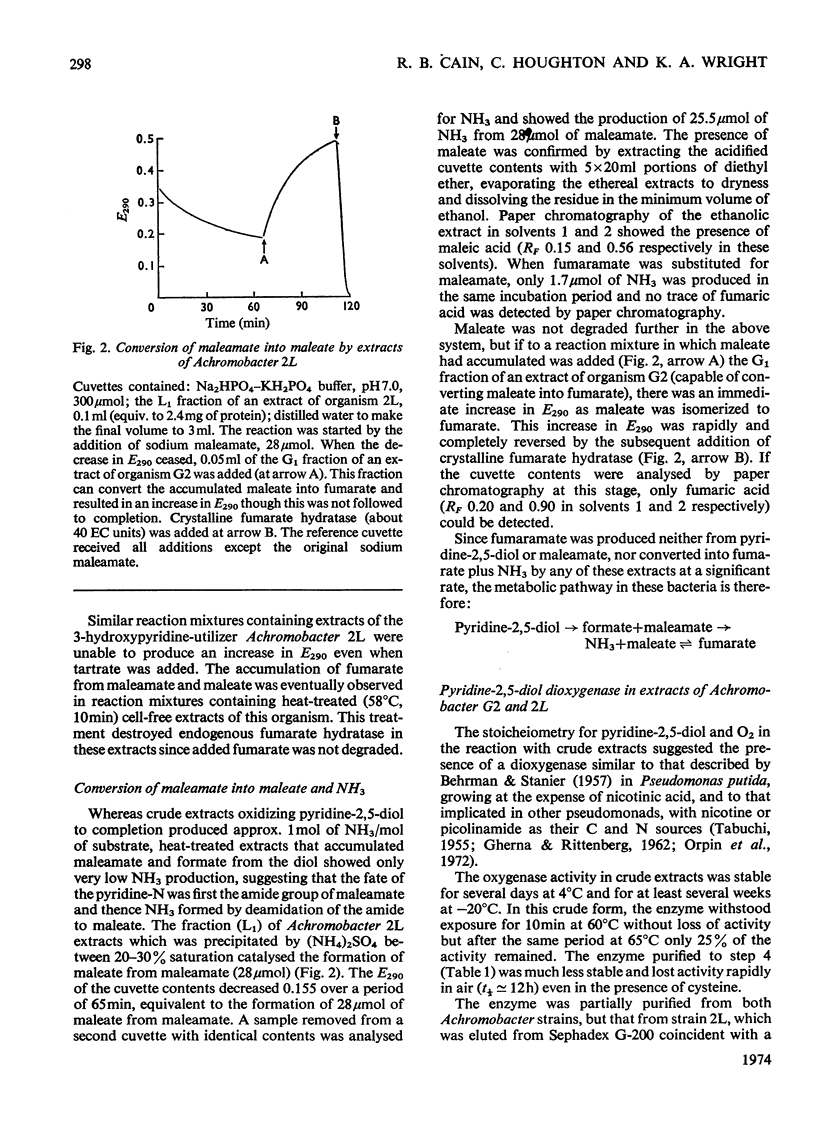
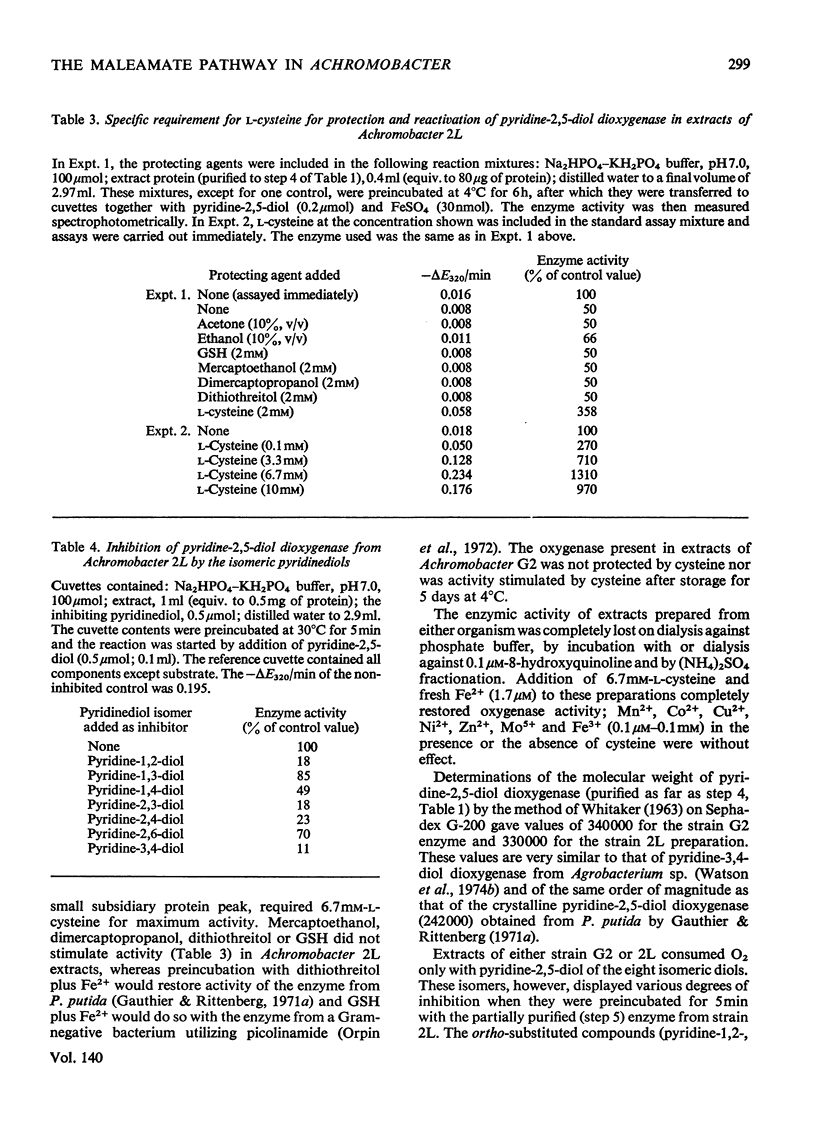
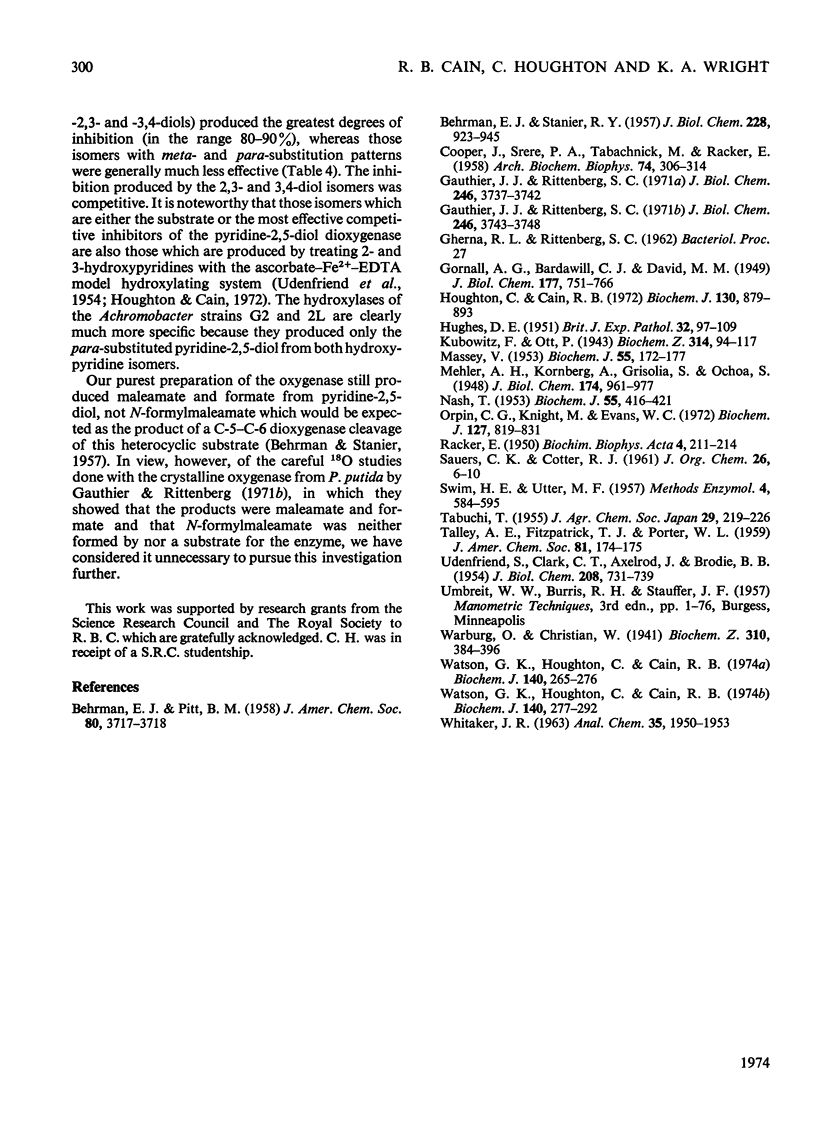
Selected References
These references are in PubMed. This may not be the complete list of references from this article.
- BEHRMAN E. J., STANIER R. Y. The bacterial oxidation of nicotinic acid. J Biol Chem. 1957 Oct;228(2):923–945. [PubMed] [Google Scholar]
- COOPER J., SRERE P. A., TABACHNICK M., RACKER E. The oxidative pentose phosphate cycle. II. Quantitative determination of intermediates and enzymes. Arch Biochem Biophys. 1958 Apr;74(2):306–314. doi: 10.1016/0003-9861(58)90002-x. [DOI] [PubMed] [Google Scholar]
- Gauthier J. J., Rittenberg S. C. The metabolism of nicotinic acid. I. Purification and properties of 2,5-dihydroxypyridine oxygenase from Pseudomonas putida N-9. J Biol Chem. 1971 Jun 10;246(11):3737–3742. [PubMed] [Google Scholar]
- Gauthier J. J., Rittenberg S. C. The metabolism of nicotinic acid. II. 2,5-dihydroxypyridine oxidation, product formation, and oxygen 18 incorporation. J Biol Chem. 1971 Jun 10;246(11):3743–3748. [PubMed] [Google Scholar]
- HUGHES D. E. A press for disrupting bacteria and other micro-organisms. Br J Exp Pathol. 1951 Apr;32(2):97–109. [PMC free article] [PubMed] [Google Scholar]
- Houghton C., Cain R. B. Microbial metabolism of the pyridine ring. Formation of pyridinediols (dihydroxypyridines) as intermediates in the degradation of pyridine compounds by micro-organisms. Biochem J. 1972 Dec;130(3):879–893. doi: 10.1042/bj1300879. [DOI] [PMC free article] [PubMed] [Google Scholar]
- MASSEY V. Studies on fumarase. 4. The effects of inhibitors on fumarase activity. Biochem J. 1953 Aug;55(1):172–177. doi: 10.1042/bj0550172. [DOI] [PMC free article] [PubMed] [Google Scholar]
- NASH T. The colorimetric estimation of formaldehyde by means of the Hantzsch reaction. Biochem J. 1953 Oct;55(3):416–421. doi: 10.1042/bj0550416. [DOI] [PMC free article] [PubMed] [Google Scholar]
- Orpin C. G., Knight M., Evans W. C. The bacterial oxidation of picolinamide, a photolytic product of Diquat. Biochem J. 1972 May;127(5):819–831. doi: 10.1042/bj1270819. [DOI] [PMC free article] [PubMed] [Google Scholar]
- RACKER E. Spectrophotometric measurements of the enzymatic formation of fumaric and cis-aconitic acids. Biochim Biophys Acta. 1950 Jan;4(1-3):211–214. doi: 10.1016/0006-3002(50)90026-6. [DOI] [PubMed] [Google Scholar]
- UDENFRIEND S., CLARK C. T., AXELROD J., BRODIE B. B. Ascorbic acid in aromatic hydroxylation. I. A model system for aromatic hydroxylation. J Biol Chem. 1954 Jun;208(2):731–739. [PubMed] [Google Scholar]
- Watson G. K., Houghton C., Cain R. B. Microbial metabolism of the pyridine ring. The hydroxylation of 4-hydroxypyridine to pyridine-3,4-diol (3,4-dihydroxypyridine) by 4-hydroxypyridine-3-hydroxylase. Biochem J. 1974 May;140(2):265–276. doi: 10.1042/bj1400265. [DOI] [PMC free article] [PubMed] [Google Scholar]
- Watson G. K., Houghton C., Cain R. B. Microbial metabolism of the pyridine ring. The metabolism of pyridine-3,4-diol (3,4-dihydroxypyridine) by Agrobacterium sp. Biochem J. 1974 May;140(2):277–292. doi: 10.1042/bj1400277. [DOI] [PMC free article] [PubMed] [Google Scholar]


